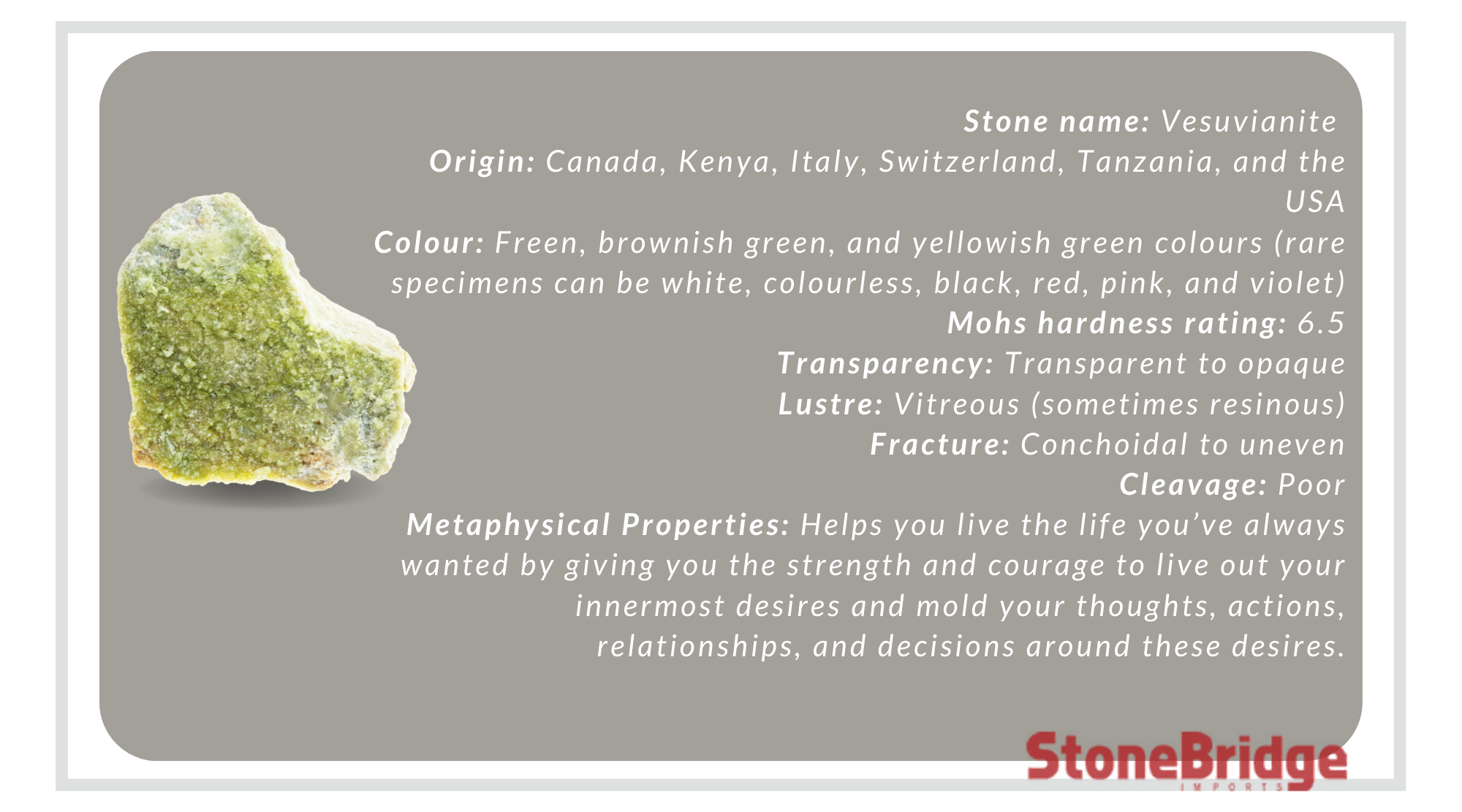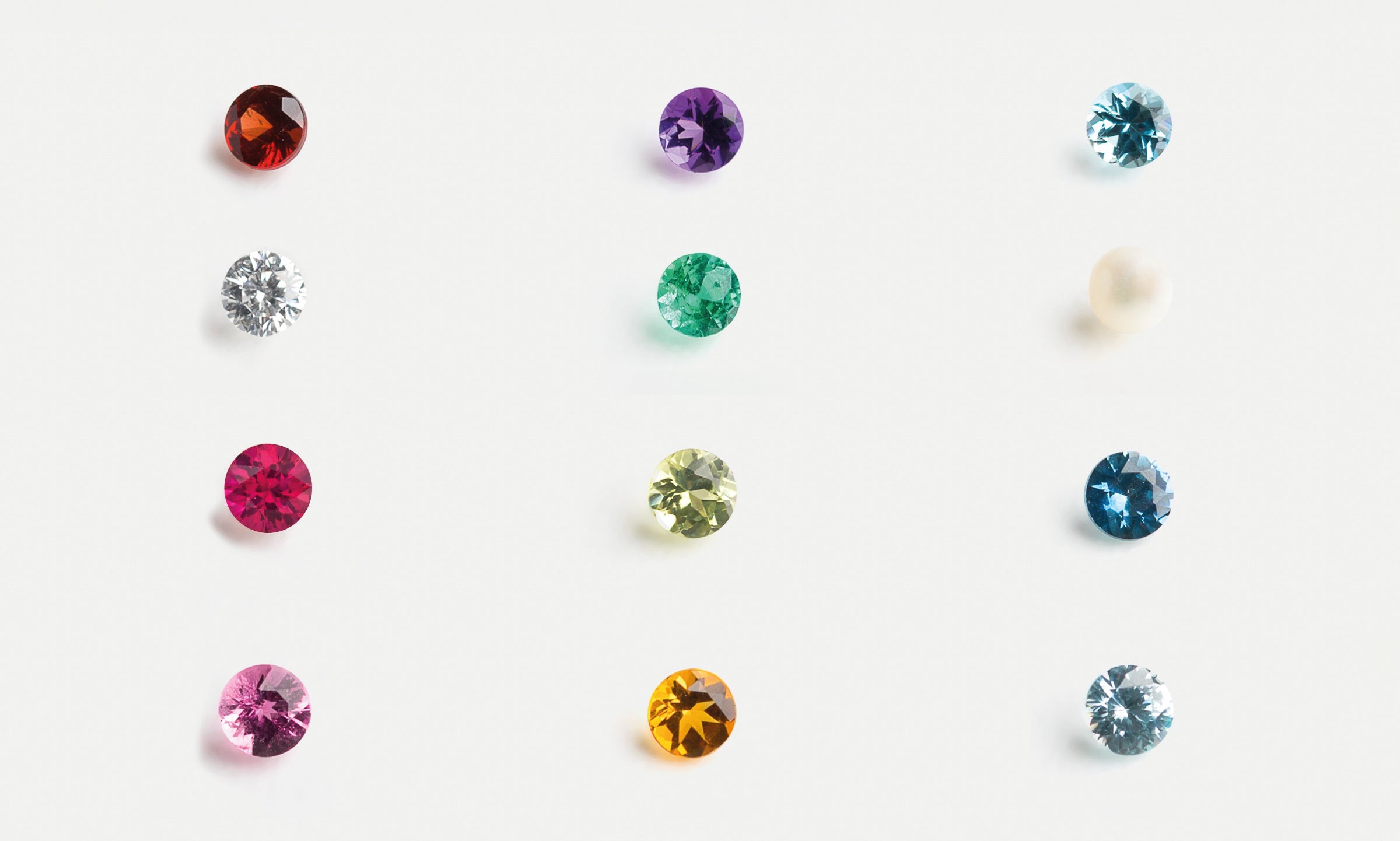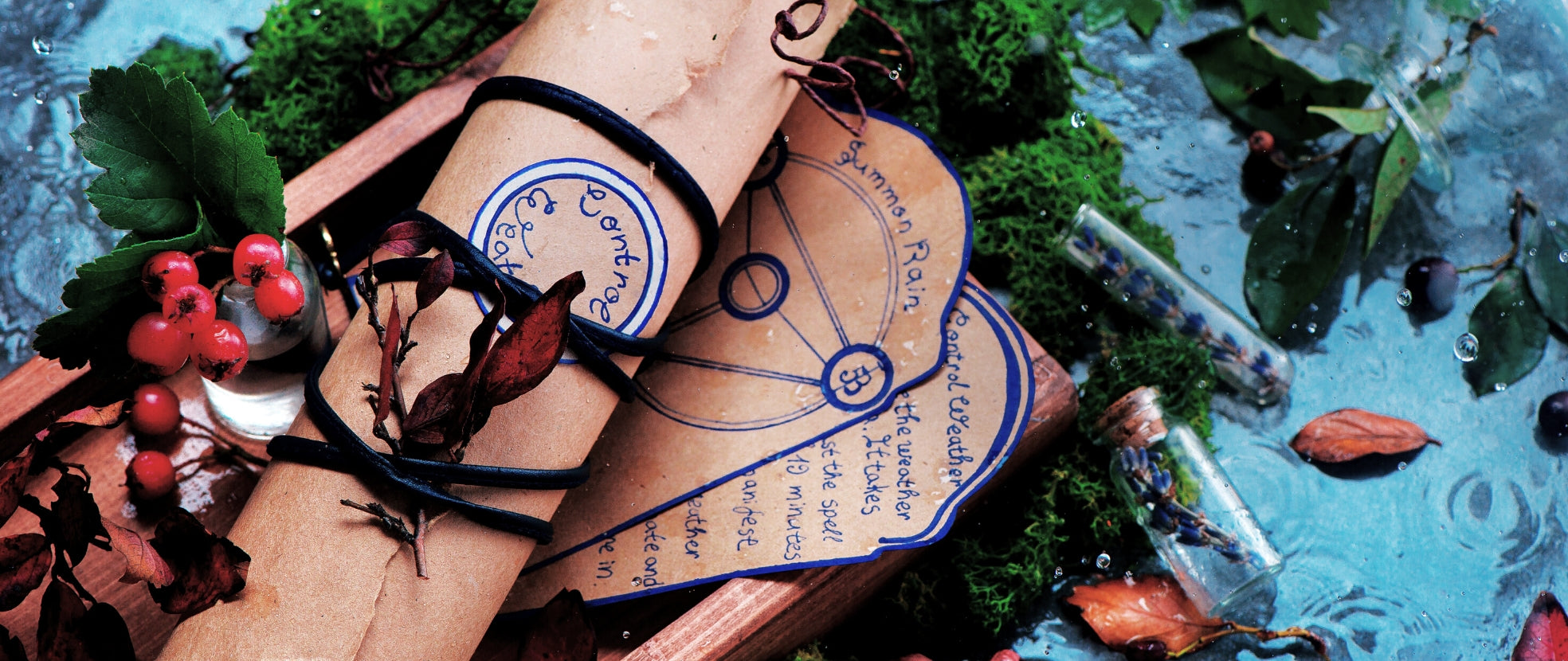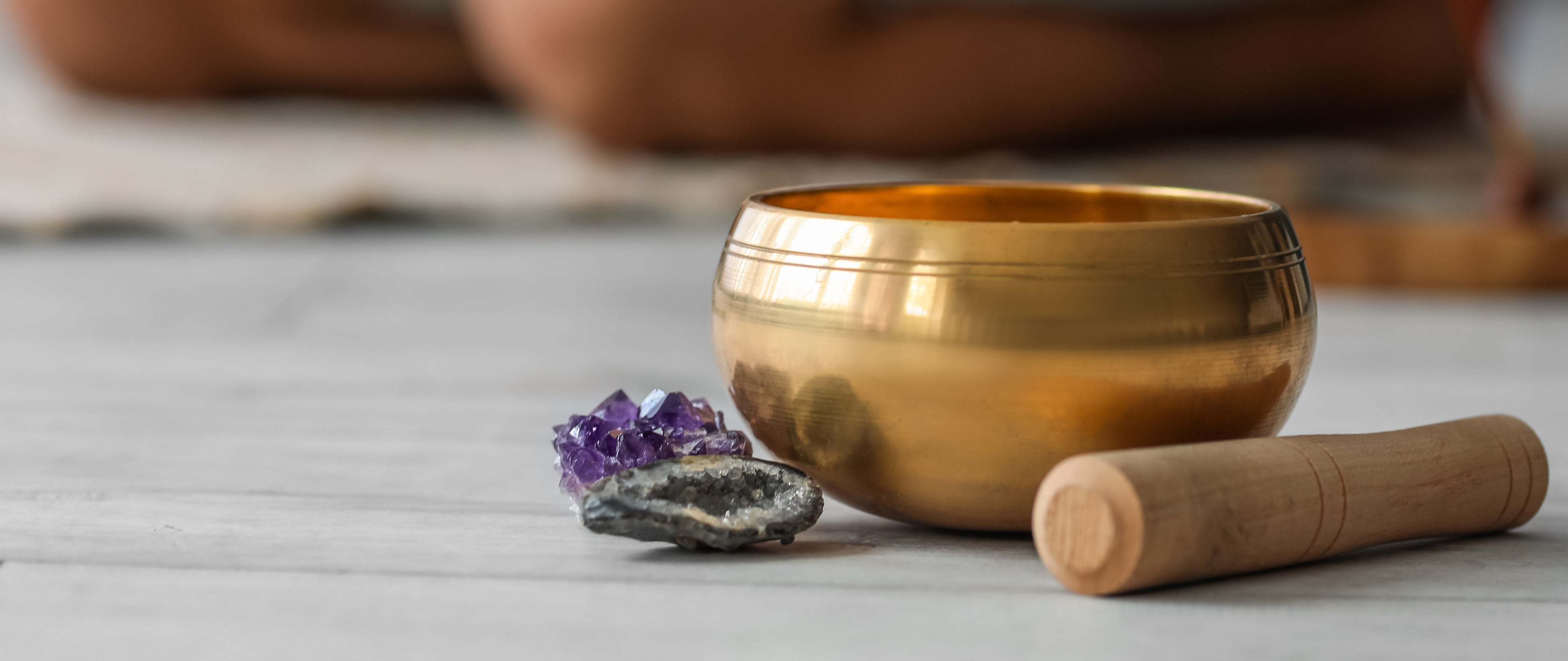Vesuvianite (also called idocrase) is a rare silicate mineral and a staple material in craft and jewelry making.
It makes for a good stone for autumn jewelry, with its soft green glow and tinges of browns and yellows resembling the turn of seasons. It's also a charming accent stone that adds allure and volume to any darker and larger stone.
As a stone of humor, vesuvianite brings zest and positivity to anyone who may be feeling lonely, depressed, or out of sorts. It helps ease tense situations and enliven a gloomy environment.
Read on to learn more about this lustrous green mineral.
The Physical Properties of Vesuvianite
It comes in a range of green, brownish green, and yellowish green colours, although rare specimens can be white, colourless, black, red, pink, and violet.
It is a durable mineral with a hardness rating of 6.5 and a poor cleavage. These qualities make vesuvianite an ideal gemstone material. It is often cut into cabochons, pendants, rings, earrings, and bracelets.
Vesuvianite has 3 popular varieties classified according to their colours and origins:
- Californite - Green vesuvianite found in California. Some refer to it as California jade or American jade
- Cyprine - Copper-rich type of vesuvianite with a blue colour
- Fluorvesuvianite - White vesuvianite originating from Russia
The History of Vesuvianite
At one point in history, the mineral had 2 names.
In 1795, German geologist Abraham Gottlob Werner called it vesuvianite because it was found near the famous volcano Mt. Vesuvius in southern Italy.
René Just Haüy, a French mineralogist, named the mineral idocrase (from the Greek words eidos and krausis, meaning mixed form) because of its multiple crystal growth and mineral combinations.
Both names are used today to refer to the green mineral. Vesuvianite is widely used among geologists, while gemologists use idocrase to describe the mineral.
Vesuvianite forms in carbonate rocks during the process of contact/hydrothermal metamorphism. It is found as massive crystals or partial replacements in dolomite, granulite, limestone, marble, or skarn. Well-formed vesuvianite crystals occur rarely and are found in cavities, fractures, and vugs.
Gem-grade vesuvianite is common in Canada, Kenya, Italy, Switzerland, Tanzania, and the USA.

The Lore of Vesuvianite
According to health folklore, vesuvianite has the ability to minimize digestion issues. It is believed to maintain smooth digestion and the proper absorption of nutrients by the body.
Other healing properties associated with the mineral include:
- Healing from chronic illnesses caused by pollution
- Restoring the sense of smell
- Melting away fear and loneliness
- Relieving stress and anxiety
- Promoting healthy weight loss
Vesuvianite is also thought to cleanse and purify toxins from the body due to its calcium, iron, and magnesium contents. It promotes a speedy recovery in patients who've been ill for a long time.
The Metaphysical Properties of Vesuvianite
Vesuvianite is connected to the heart chakra. Use it to release bottled up emotions (anger, hatred, fear, guilt, and jealousy) so you can move forward. It also clears the mind of negative thoughts, helping you think logically.
Vesuvianite is a great stone to work with to improve your mental health. It may help you significantly if you're experiencing depression as it can free you from destructive thought patterns and bring about energy and enthusiasm.
It can help you live the life you've always wanted by giving you the strength and courage to live out your innermost desires and mold your thoughts, actions, relationships, and decisions around these desires. In short, vesuvianite aligns your inner world and present reality to achieve your aspirations.
Vesuvianite is also a stone of success and prosperity. Wear it to work or keep a vesuvianite stone in your pocket to attract meaningful collaborations and deflect stress in the workplace. It can increase your productivity levels and help you engage and cooperate with your coworkers better.
Note: There is no scientific evidence that supports the effectiveness of mineral stones and crystals in treating ailments. All information published here is purely for educational purposes.
Scientists attribute the healing impact to the placebo effect that takes place when using stones and crystals. Holding stones and meditating with them is said to trigger the release of feel-good hormones (endorphins and dopamine) in the brain.
Sources:
King, H. (n.d.). Vesuvianite. Geology.com. Accessed at https://geology.com/minerals/vesuvianite.shtml#properties
Houston, D. (n.d.).Vesuvianite: Meanings, Properties and Powers. Crystals&Jewelry.com. Accessed at https://meanings.crystalsandjewelry.com/vesuvianite/
Vesuvianite Mineral Data. (n.d.). Webmineral.com. Accessed at http://webmineral.com/data/Vesuvianite.shtml#.Yfn2pvXP23J
Todd, L. (2021, June 29). Do crystals work for anxiety and depression? Medical News Today. Accessed at https://www.medicalnewstoday.com/articles/crystals-for-anxiety-and-depression





